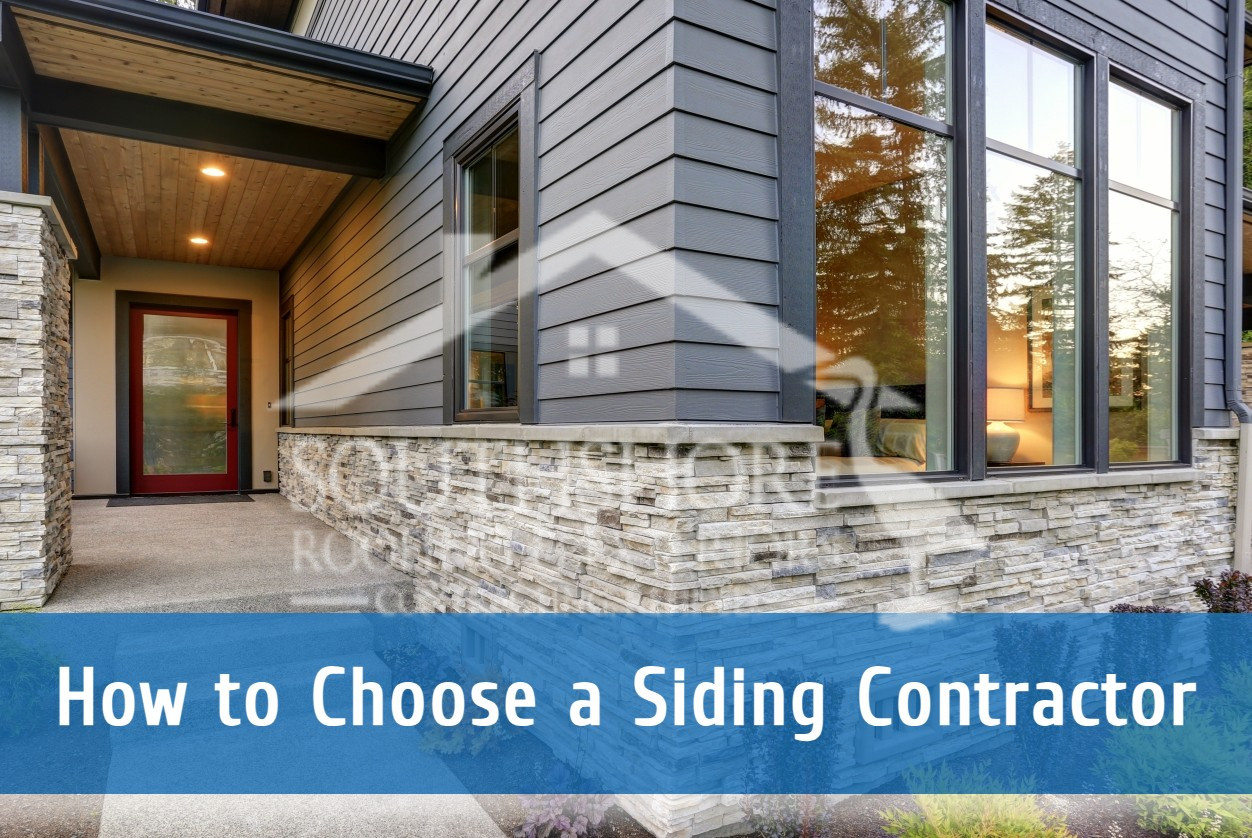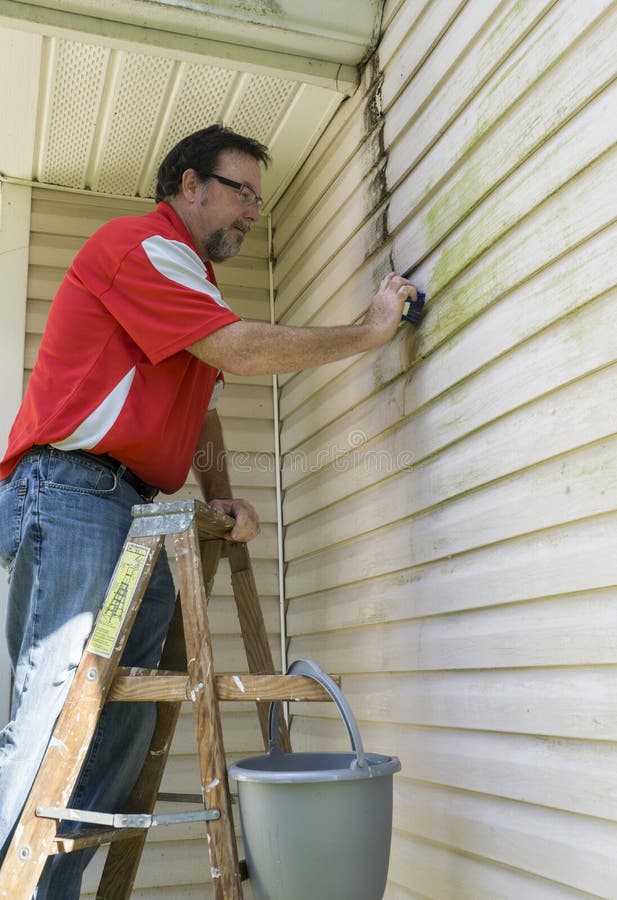The Essential Guide to the Different Types of Home Siding and Their Special Advantages
In the world of home enhancement, choosing the appropriate exterior siding is a vital choice that impacts both aesthetic appeal and practical efficiency. The selection of products available, such as wood, plastic, fiber concrete, brick, and metal, each offer special advantages that deal with various demands and choices. Comprehending these differences can significantly improve the longevity and worth of a home - morris siding contractor. However, with so numerous alternatives to think about, which siding product genuinely stands out for your specific job? Discovering these selections can result in notified decisions that line up with both style and functionality.
Timber House Siding
Timber exterior siding, a preferred option for property exteriors, offers a timeless visual that combines all-natural appeal with structural integrity. This siding product is offered in different styles, consisting of clapboard, roof shingles, and board-and-batten, enabling house owners to customize their appearance to match their style preferences. Timber home siding is normally crafted from resilient species such as cedar, redwood, or want, which are understood for their strength and capability to withstand ecological stressors.
Among the main advantages of wood siding is its exceptional insulation homes, which can add to energy performance and lower home heating costs. In addition, timber home siding is biodegradable, making it an eco-friendly choice when sourced sustainably. Regular maintenance, consisting of painting or discoloration, can extend its life-span and enhance its look, enabling homeowners to maintain the natural beauty of the wood.
Nevertheless, possible downsides include sensitivity to pests, rot, and weather condition damages, demanding sufficient treatment and maintenance - morris siding contractor. Regardless of these concerns, when appropriately looked after, wood exterior siding can offer a long lasting and beautiful service that improves the personality of a home while supplying a warm, inviting environment

Vinyl Siding
Plastic exterior siding has actually arised as a leading choice for house owners seeking a low-maintenance exterior option that integrates sturdiness and affordability. This flexible product is crafted from polyvinyl chloride (PVC), making it resistant to different weather, including dampness and UV rays. As a result, plastic siding does not warp, rot, or fade, ensuring resilient visual appeal.
One of the key benefits of plastic house siding is its substantial variety of colors and designs, permitting homeowners to achieve the desired try to find their property without the demand for constant repainting. In addition, vinyl house siding is easy to set up, which can dramatically reduce labor prices during building or improvement projects.
Vinyl home siding additionally adds to energy efficiency. Numerous choices attribute insulation support, which boosts thermal efficiency, assisting to keep comfy interior temperature levels and potentially lowering energy bills. Moreover, its smooth surface area promotes very easy cleaning, requiring only periodic washing with a garden hose pipe to eliminate dirt and debris.
Fiber Cement Exterior Siding
Fiber cement siding has gained grip among home builders and house owners alike because of its amazing you can try these out combination of durability and aesthetic convenience. Made up of a blend of cellulose, sand, and cement fibers, this siding alternative is crafted to stand up to extreme climate condition, including high winds, heavy rain, and temperature changes, making it a resilient choice for property outsides.
Among the main advantages of fiber cement siding is its resistance to bugs, such as termites, and its non-combustible nature, offering enhanced fire security. morris siding contractor. Furthermore, it is available in a wide selection of designs, shades, and textures, enabling homeowners to attain their desired aesthetic without compromising efficiency
An additional benefit is its low maintenance needs; fiber concrete house siding commonly requires painting or staining every 5-10 years, which is much less frequent than other products. In addition, its longevity adds to a lower general price of ownership, as it lowers the need for frequent repair work or replacements.
Eventually, fiber concrete siding represents an outstanding investment for those seeking a resilient, attractive, and versatile exterior choice, integrating both type and function to enhance the home's curb allure.
Metal Exterior Siding
The appeal of useful content metal house siding depends on its durable longevity and modern aesthetic charm, making it a popular selection for modern design. Offered in products such as aluminum and steel, metal siding offers a variety of coatings and shades, permitting house owners to accomplish an individualized look that complements their layout vision.

Energy efficiency is one more considerable advantage, as lots of steel home siding items are created with insulation choices that aid manage interior temperature levels. This can cause minimized power expenses gradually. In addition, metal home siding is usually recyclable, making it an eco-friendly option for sustainability-minded house owners.
The setup process for metal exterior siding can be relatively uncomplicated, causing a quicker turnaround time for building jobs. Overall, steel exterior siding combines capability and design, making it a useful option for those looking for a aesthetically attractive and long-lasting outside surface.
Block and Rock Siding
Block and stone siding stands out as an ageless choice that boosts the aesthetic beauty of any type of home. Known for their resilience and reduced maintenance, these products supply an outstanding return on investment while boosting the residential property's curb appeal. Offered in various colors, textures, and patterns, brick and rock can be tailored to fit diverse building designs, from conventional to modern-day.
Among the primary advantages of block and rock exterior siding is their power performance. Both products have all-natural insulating buildings that help control interior temperature levels, possibly reducing heating and cooling expenses. Furthermore, they supply superior fire resistance compared to other home siding alternatives, adding to enhanced safety.
An additional benefit is their longevity. Brick and stone can last for decades, typically needing very little maintenance past periodic cleansing. Unlike timber home siding, they are invulnerable to insects and rot, guaranteeing a long-lasting outside that withstands the elements.
Conclusion
In summary, the selection of siding considerably impacts a home's visual allure, power performance, and upkeep needs. Each kind of home siding-- whether wood, vinyl, fiber cement, block, or steel and stone-- provides distinct benefits customized to numerous house owner choices and environmental conditions. Understanding these alternatives allows notified choices that improve both the longevity and aesthetic appeal of residential outsides. Eventually, choosing the right siding is important for attaining an equilibrium between functionality and style in domestic style.
One of the main benefits of wood house siding is its outstanding insulation you could try this out residential properties, which can contribute to power efficiency and lower heating prices. Additionally, wood home siding is biodegradable, making it an ecologically pleasant alternative when sourced sustainably.One of the primary benefits of metal house siding is its resistance to various environmental aspects.Power efficiency is another considerable benefit, as several metal exterior siding products are created with insulation alternatives that help regulate indoor temperatures. Each type of home siding-- whether timber, vinyl, fiber cement, brick, or metal and stone-- uses unique advantages customized to various property owner preferences and environmental conditions.